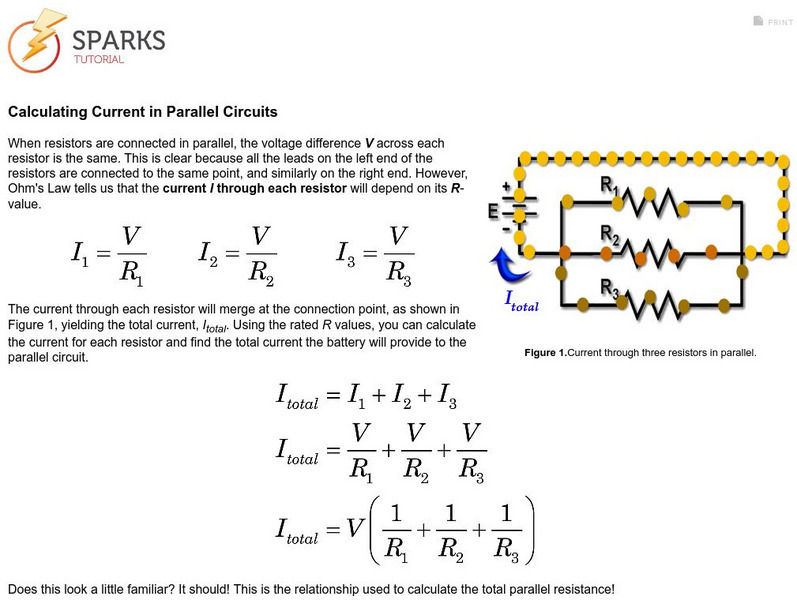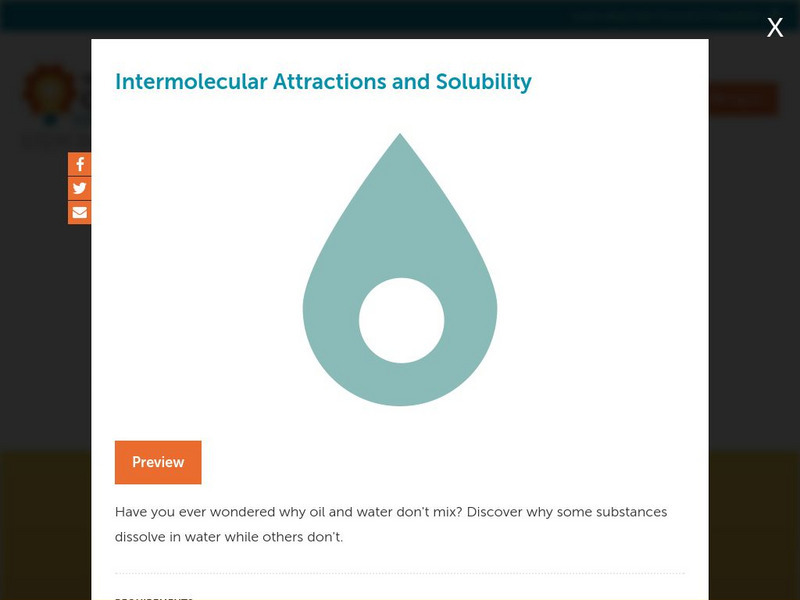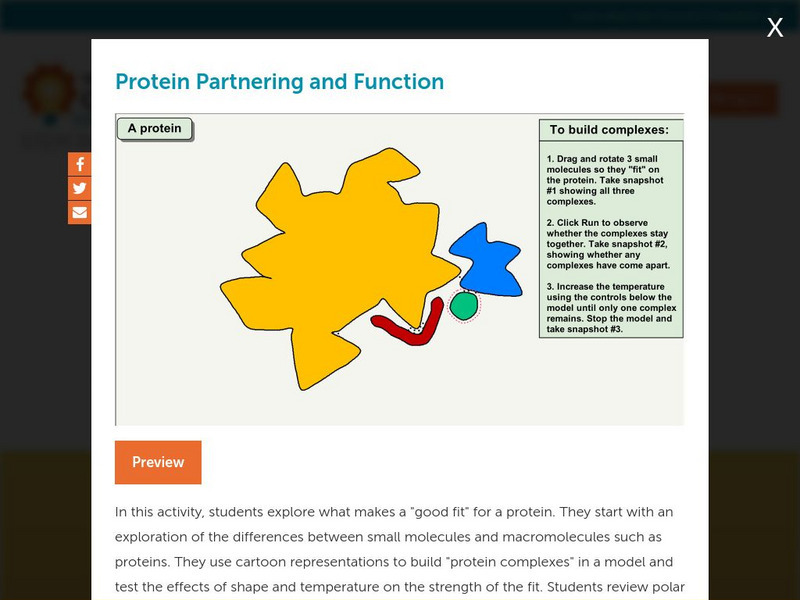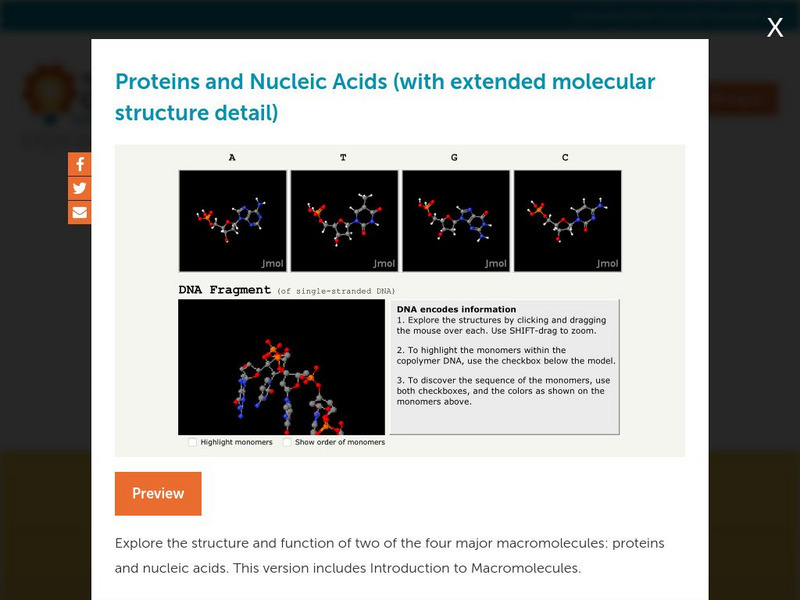Concord Consortium
Concord Consortium: Calculating Voltage in Series Parallel Circuits
Use the series and parallel resistance formulas to determine the total resistances of the parts. Then, use Ohm's Law to calculate the voltage drops across each part.
Concord Consortium
Concord Consortium: Total Resistance in Series Parallel Circuits
Use the formula for the parallel resistors to calculate the total resistance in series-parallel circuits.
Concord Consortium
Concord Consortium: Calculating Current in Parallel Circuits
Use Ohm's Law to calculate the current in parallel circuits.
Concord Consortium
Concord Consortium: Measuring Current in Parallel Circuits
When measuring the current in parallel circuits, compare the circuit's total current with the current through just one resistor.
Concord Consortium
Concord Consortium: Total Resistance for Resistors in Parallel
See how this application of Ohm's Law leads to a formula for the total of parallel resistances.
Concord Consortium
Concord Consortium: Dam Removing: Changes in the Environment Affect Population
What happens to a population when the environment changes? Students remove a dam that divides an ecosystem to illustrate the effects of environmental changes. Students observe and collect data as the grass and then the rabbit populations...
Concord Consortium
Concord Consortium: Dam Building: How Changes in Environment Affect Population
In this simulation, students build a dam in the middle of a field, dividing an ecosystem in half to illustrate the effects of environmental changes. They watch and collect data as the grass and then the rabbit populations in that region...
Concord Consortium
Concord Consortium: The Effect of Environmental Factors on the Growth of Plants
How do environmental factors affect the growth, development, and health of organisms? Students explore the effect of environmental factors on traits by investigating factors that affect the growth of plants.
Concord Consortium
Concord Consortium: Gene Environment Interaction: Food and Sand Rat Health
Students explore the effect of both genes and environment on the health of sand rats, a model for studying diabetes in humans.
Concord Consortium
Concord Consortium: Diffusion, Osmosis and Active Transport
This activity demonstrates diffusion, osmosis, and active transport through 12 interactive models. (Requires Java)
Concord Consortium
Concord Consortium: Excited States and Photons
Investigate how atoms can be excited to give off radiation (photons) with models of electron energy diagrams.
Concord Consortium
Concord Consortium: Phase Change
In this activity, students explore phase change at a molecular level. (Requires Java)
Concord Consortium
Concord Consortium: Gas Laws & Human Biology
This activity addresses Boyle's Law from a physiological perspective.
Concord Consortium
Concord Consortium: Gas Laws & Weather Balloons
This activity uses the phenomena of hydrogen-filled weather balloons and hot air balloons to explore some of the gas laws.
Concord Consortium
Concord Consortium: How Do Cells Make Proteins?
Learn how the code on a strand of DNA can be used to make a protein.
Concord Consortium
Concord Consortium: Intermolecular Attractions and Solubility
Have you ever wondered why oil and water don't mix? Discover why some substances dissolve in water while others don't.
Concord Consortium
Concord Consortium: Intermolecular Attractions and Boiling Point
The temperature at which substances boil is determined by intermolecular attractions. Explore how these forces affect a substance's boiling point.
Concord Consortium
Concord Consortium: Introduction to Macromolecules
This activity introduces the fundamental characteristics of biological macromolecules.
Concord Consortium
Concord Consortium: Gas Laws
In this activity, students study gas laws at a molecular level.
Concord Consortium
Concord Consortium: Protein Partnering and Function
In this activity, students explore what makes a good fit for a protein.
Concord Consortium
Concord Consortium: Newton's Laws at the Atomic Scale
Explore how Newton's three laws apply to the world of atoms and molecules. Start with the originally contradictory observation of Brownian motion. Then, each law is addressed at the atomic level.
Concord Consortium
Concord Consortium: Four Levels of Protein Structure
Explore how protein folding creates distinct, functional proteins by examining each of the four different levels of protein structure. (Requires Java)
Concord Consortium
Concord Consortium: Proteins and Nucleic Acids
Explore the structure and function of two of the four major macromolecules: proteins and nucleic acids. This version includes Introduction to Macromolecules. (Requires Java)
Concord Consortium
Concord Consortium: Graphing Quadratic Equations
Students learn to graph the equation of a quadratic function using the coordinates of the vertex of a parabola and its x-intercepts.
























